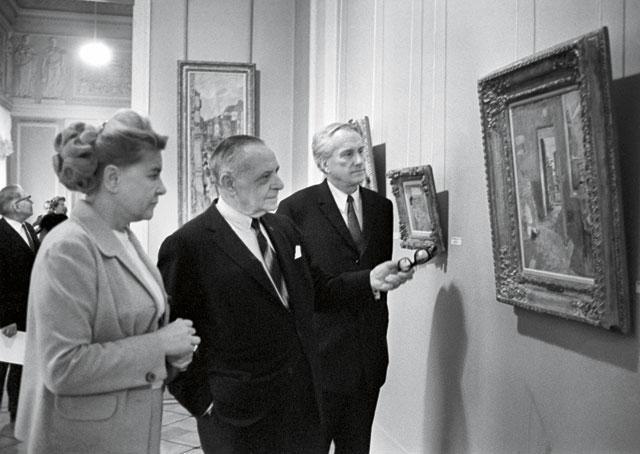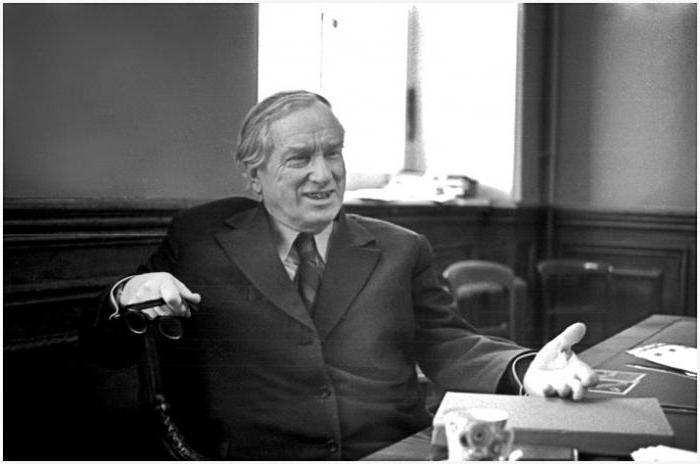The grandson of the Russian general, an outstanding teacher and art critic Boris Piotrovsky devoted more than sixty years of his life to scientific work in the State Hermitage. He wrote more than 150 scientific monographs and fundamental works on the archeology of the East and the Caucasus, the ancient culture of Urartu, and other scientific research in the field of archeology.
Boris Piotrovsky: date of birth, childhood of a scientist
In the Northern capital of Russia, a boy was born in the family of Boris Bronislavovich and Sofia Alexandrovna Piotrovsky. Who then knew that this was the future director of the State Hermitage Museum Boris Piotrovsky. The biography of the Soviet scientist-archaeologist begins on February 14, 1908. He was the third son in the family of a mathematics teacher at the Nikolaev Cavalry School in St. Petersburg. In his childhood, Boris Piotrovsky lived in the building of the educational institution, where his father was allocated a one-room apartment. Together with his wife and four sons, Boris Bronislavovich lived in the departmental housing of the Nikolaev school until 1914, until he received a new appointment. The class inspector of the Neplyuevsky cadet corps in Orenburg is a new position of B. B. Piotrovsky. Following the father, the remaining members of a large and friendly family also move. The October Revolution and the Civil War found the Piotrovsky family in Orenburg. In 1918, his father was appointed director of the first male gymnasium in Orenburg. It is within the walls of this educational institution that Boris Piotrovsky gets his first education.

Years of study at the university
Upon his return to Leningrad, in 1924, Boris Borisovich entered the university. The choice of a sixteen-year-old youth is the university faculty of material culture and language, now the historical-linguistic faculty. The student’s teachers were the best representatives of the pre-revolutionary Russian and old European schools of ethnography and archeology. The circle of scientific interests of Boris Borisovich for that period is ancient Egyptian writing. However, on the recommendation of Academician N. Ya. Marr, towards the end of university studies, Boris Piotrovsky seriously engaged in Urartian writing.
Researcher at the State Hermitage Museum
After graduating from a higher educational institution, a young scientist goes on his first scientific expedition to the Caucasus. A year later, on the recommendation of his scientific mentor, academician N. Ya. Marr, Boris Piotrovsky (photo below)
without postgraduate study is appointed to the post of
junior researcher in the Hermitage. Scientific research and the study of Urartian civilization in Armenia, Azerbaijan, Turkey allowed the scientist in 1938 to write a dissertation and get a scientific degree. So, in 1938, Boris Piotrovsky became a candidate of historical sciences.
War years
The Great Patriotic War found the scientist on another scientific trip to the Caucasus. Returning to his native museum, Boris Borisovich spent the hardest time for Leningrad, the blockade period of 1941-1942, together with his staff. Not a single work in the museum walls of the Hermitage was damaged. This was due to considerable merit of Joseph Abgarovich Orbeli, director of the museum, and other employees of the State Hermitage Museum, including Boris Piotrovsky. The museum’s basements turned into bomb shelters when, after 872 days of the siege of Leningrad, all museum exhibits, or more than 2 million pieces of unique works of world art, were evacuated together with Hermitage scientists to Yerevan (Armenia), where they stayed until the fall of 1944. At the beginning of 1944, B. B. Piotrovsky defended his doctoral degree at the walls of the Armenian Academy of Sciences. The topic of scientific works is the history and culture of the ancient civilization of Urartu.

Boris Piotrovsky: the family and personal life of a scientist
Participating in the summer of 1941 on a scientific trip to study Karmir Blur, an ancient hill located in the Armenian Highlands, on the site of which the remains of an ancient settlement of Teishebaini were discovered, the scientist met with Ripsime Janpoladyan, a student at Yerevan University. It turned out that not only scientific interests can bind two scientists. Young people got married in 1944, when Boris Piotrovsky, sick and emaciated, was evacuated from the besieged Leningrad. The nationality of the chosen one of the Leningrad scientist-archaeologist is Armenian. Hripsime Janpoladyan comes from an ancient Armenian clan who owned the Nakhichevan salt mines. Soon, the first-born son, Mikhail, appears in the family of scientists, who will subsequently continue the work of his parents and become the director of the State Hermitage Museum in St. Petersburg, working in this position today.
Further career growth of a talented scientist
Upon his return to Leningrad, Boris Borisovich continued to engage in scientific and teaching work. He, a corresponding member of the Academy of Sciences of Armenia and a laureate of the Stalin Prize in the field of science and technology, was offered to give a course of lectures on archeology at Leningrad University. Soon, his main scientific work, Archeology of the Transcaucasus, was published, which was compiled from carefully designed lecture notes at the Faculty of Oriental Studies of Leningrad State University. In 1949, B. B. Piotrovsky became deputy director for research at the State Hermitage.
During the years of persecution against his university curator N. Ya. Marr, Boris Piotrovsky took a neutral position and distanced himself from the ideological campaign, devoting himself to excavating the ancient civilization of the Teishebaini fortress city. This fact allows Boris Borisovich to preserve all previous scientific achievements and stay in the leading position of the museum worker. May Day holidays of 1953 B. B. Piotrovsky meets with a special upsurge. He is appointed the head of the Leningrad branch of the Institute of the History of Material Culture. This administrative position Boris Piotrovsky will occupy 11 years. After the removal of M. I. Artamonov (due to the organization of an exhibition of abstract students of the Academy of Arts in the museum walls of the Hermitage), Boris Piotrovsky took his place as director. He held this high post of director of the main museum of the country for more than 25 years.
In memory of grateful descendants
Permanent nervous overload adversely affected the health of the already elderly director of the Hermitage. October 15, 1990 as a result of a stroke B. B. Piotrovsky died. Died scientist, full member of the Academy of Sciences of the Soviet Union at 83 years of life. Boris Piotrovsky was buried on Vasilievsky Island in St. Petersburg, in the Orthodox Smolensk cemetery near the grave of his parents. In 1992, a memorial plaque was installed on the house where the scientist lived with his family . The scientific heritage of the legendary person, his articles, travel records, monographs, catalogs created in the largest world museum, grateful descendants use today. One of the streets of the capital of Armenia was renamed in honor of Boris Piotrovsky, and the International Astronomical Union named Piotrovsky as one of the minor planets.
Homeland Awards
Boris Borisovich received his first and most expensive government award in 1944, it was the medal “For the Defense of Leningrad”. In the future, the merits of a scientist were often noted by the Soviet government:
- 1983 - Hero of Socialist Labor.
- 1968, 1975 - Order of Lenin.
- 1988 - Order of the October Revolution.
- 1945, 1954, 1957 - Order of the Red Banner of Labor.
In addition to these awards, there are various orders and medals from foreign countries. France, Bulgaria, Germany, Italy - this is only an incomplete list of countries where the scientific achievements of a scientist were recognized. In 1967, the British Academy awarded B. B. Piotrovsky the honorary title of "Corresponding Member".